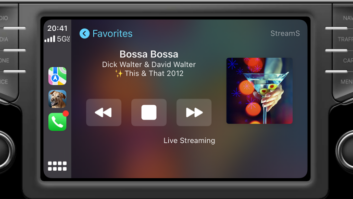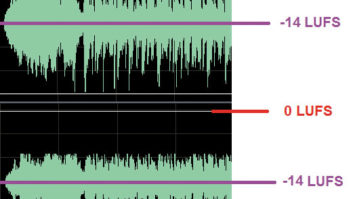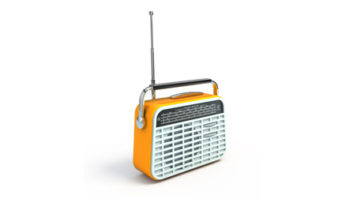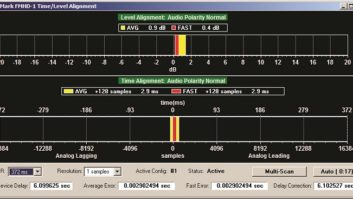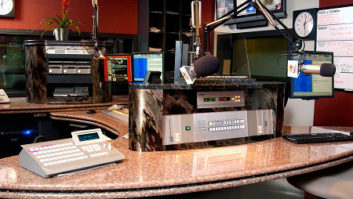Modern Modulation Techniques
Jul 1, 2014 9:00 AM, Jeremy Ruck, PE
Modern society is definitely more mobile than it was several decades ago. Accompanying the increased mobility is a corresponding craving for greater quantities of information. The increased demand has called for a number of changes in modulation techniques. This month we look at several of them.
Initial wireless transmissions were an offshoot of telegraphy. The first spark gap transmitters worked well, but were of course quite �dirty� in their operation. In 1906 the venerable method of amplitude modulation radio was born.
While it would take several more years to reach commercial viability, this simple method of transmission would reign supreme for several decades. The development of AM came out of the realization that the waves produced by spark gaps were insufficient for the transmission of audio material. Instead of the on-off scheme under which spark gap transmitters operated, continuous waves would be required. This carrier wave is amplitude modulated by audio before transmission. (See Figure 1.)

Figure 1: Amplitude Modulation
Since free lunch rarely exists, the benefit of the simplicity of AM was offset by audio quality and inefficiency. The simplistic modulation scheme of AM makes it very susceptible to natural and man-made noise sources. In addition, the majority of the power is concentrated in the carrier, which lacks the original transmitted information.
In the more modern technique of FM, the transmitted information varies the instantaneous frequency of the carrier, while maintaining the amplitude. The frequency of the carrier, for the most part, will tend to reside within a certain range on either side of the carrier known as the frequency deviation. In a Fourier analysis, which breaks up the signal into combinations of simpler signals, we find that a much broader range of frequencies is required to fully characterize an FM signal. Indeed this range extends to infinity, but at that point, and well in advance of it, the amplitudes are so low, that they practically drop out of the equations.
Of course, a major advantage with FM is its ability to reduce noise. In reality, below the noise threshold, FM actually has a poorer signal-to-noise ratio than AM does; however, above this level the SNR is vastly improved. Wider deviations can increase this ratio, as can pre-emphasis. Limiter circuits provide additional benefit by removing AM noise, as the FM signal is of constant amplitude. (See Figure 2.)

Figure 2: Frequency Modulation
– continued on page 2
Modern Modulation Techniques
Jul 1, 2014 9:00 AM, Jeremy Ruck, PE
One simple form of FM is frequency-shift keying, or FSK. In FSK, digital information is transmitted through discrete changes in the carrier frequency. In simple form, a pair of frequencies can be utilized to transmit binary information as a �1� and �0� or �mark� and �space�. This is one such method permissible for the identification of FM translator stations.
Another modulation scheme similar to FM is phase modulation.
Within the genre of phase modulation, there are many subsets. These schemes lend themselves well to digital uses, and are seen frequently in STL applications. The more common ones seen here are Quadrature Amplitude Modulation, and the higher density 16-QAM and 64-QAM.
QAM is a modulation scheme that can be either analog or digital. Two data streams or analog signals are transmitted by amplitude modulating two different carrier waves. If the QAM transmission is digital, then amplitude-shift keying is utilized, whereas AM is used if analog is transmitted. These two carriers, which are 90 degrees out of phase with each other, are then added. The output waveform is, in the analog case, a combination of phase modulation and amplitude modulation, while in the digital case contains both phase-shift keying, and amplitude-shift keying. Mathematically speaking, the two signals can be represented as sine and cosine functions because a 90-degree phase shift exists between those two functions as well.
In the analog realm, QAM allows multiple signals to be carried on a single carrier. Seasoned television engineers should be quite familiar with this, as it is how the �I� and �Q� signals carried chroma information. Similarly, the C-QUAM system allowed the two channels necessary for stereo to be carried on a single carrier.
On the digital side, QAM is quite impressive, and allows for much higher data rates than analog modulation schemes. The digital signal is quantized, and through this process is constrained to certain regions in which it can reside. Just as your domicile has a distinct address identifying your location, the places where the signal can reside also have addresses. These addresses are represented by a series of bits, which give amplitude and phase information for the quantized signal. The collection of these individual addresses forms a constellation, which is an effective way to look at the signal.
In 16-QAM, there are sixteen distinct locations, which generally exist in a 4×4 square grid. Therefore, each location is represented by a four-bit binary address ranging from 0000 to 1111. (See Figure 3.)
Figure 3: 16-QAM constellation diagram
In 64-QAM, the number of possible addresses enlarges to 64, which necessitates an increase in the neighborhood density, and the use of six bits per address. Generally speaking, the increase in the constellation size follows powers of two.
These high-density QAM schemes allow for very high levels of spectral efficiency and very high data transfer rates. Some current Ethernet devices use 1024-QAM and 4096-QAM for their modulation schemes. In fact, 1024-QAM is now becoming more common on long-haul microwave systems, and allows for a capacity increase of 25% over the industry standard 256-QAM. With such robust schemes, massive amounts of data can fit into a single channel.
This increase in capacity and efficiency has a tradeoff in stability in some instances. As constellations become more densely packed, and the bit quantity increases for a given symbol, the potential for error and noise becomes much greater. Although error correction methodologies have lessened the impact of noise, they have not eliminated problems altogether. Sometimes a path is just too far or too noisy to be reliable with more dense techniques. In such cases, a decrease in the constellation size will usually help, but that of course reduces capacity. This is generally not an issue in radio broadcast applications.
In the end, more advanced techniques of modulation have allowed for increased flows of information, and have evolved our industry. The advances made in the past several years have been impressive, with potential future advances just as impressive. We sure have come a long way from the venerable spark gap.
Ruck is the principal engineer of Jeremy Ruck and Associates, Canton, IL.





